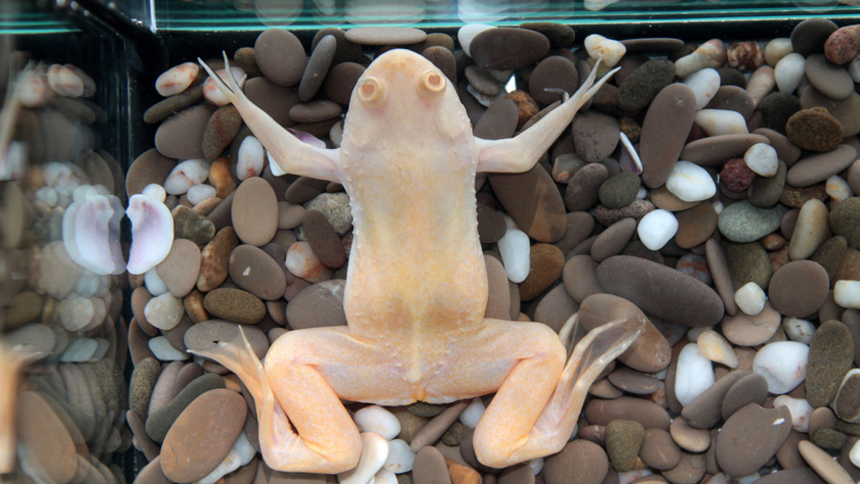
How to Set Up an Aquatic Frog Tank
Aquatic frogs are among the most popular amphibians kept as pets. They’re easy to take care of, great for beginners, and require very little upkeep. Not only that, getting an aquarium and buying the frogs is fairly cheap. That is exactly what this step-by-step guide is for; setting up an aquatic frog aquarium.
Before we get into the build, I will start by emphasizing one thing; this guide is not for a specific aquatic frog. This build is suitable for African Dwarf Frogs and even African Clawed Frogs. If you’re not familiar with their needs, the first things you should do is learn about the frog you want to keep.
Chances are, the frogs available at the local pet store are African Dwarf Frogs. They’re small frogs, with webbed front and back feet and have eyes on the side of their heads. The African Clawed Frog is very similar in appearance. So similar, in fact, that they’re often mislabeled at pet stores. Anyway, the clawed frogs don’t have webbing on their front feet. They have 3 independent digits. Also, their eyes are on top of their heads. I’ve created care sheets for both and you can find them in the frog care guides section of this website.
Page Contents
Basic Tank Setup for Aquatic Frogs
When setting up a tank for an aquatic frog, the most important aspect is the water. Amphibians have semi-permeable skin which means they absorb things through their skin. It’s because of this reason that the water needs to be clean, free of toxins and dechlorinated. I talk more about water in the final step of this guide. The second most important part is the size of the tank. I recommend a 10-gallon minimum, plus an additional 5 to 10-gallons per frog.
Aside from the tank, you’ll need a water heater if you’re keeping African Dwarf Frogs. African Clawed Frogs do a little better at room temperature but both need a nice day and night-time light schedule. They actually don’t require lighting, but it’s always a good idea for tanks that are placed in rooms with little or no sunlight from windows. Anyway, here is a step-by-step guide for setting up an aquatic frog tank.
Step 1: Picking an Aquarium
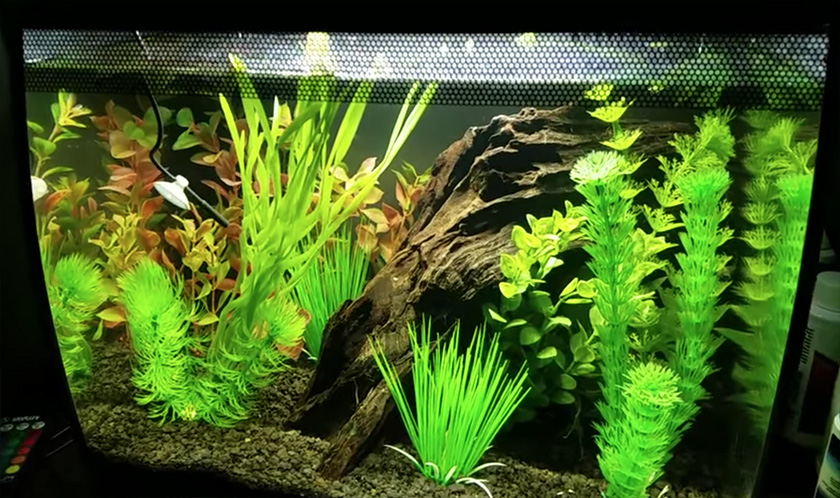
When selecting the perfect aquarium, there are 2 main aspects that come into play. How big the tank is and how much it costs. Luckily, there are a handful of companies competing to make the best aquariums for the lowest prices; finding a cheap aquarium is the easy part. Whether you look online or at the pet store, there are plenty of options.
The size is important. While the width and depth of the tank can be as large as you want, the height should be no more than 12″. African Dwarf Frogs actually surface to breathe air and because of this, it’s suggested that the standard 12-inch tall tanks are all you should use. As for the overall size; 10-gallons minimum with an additional 5 to 10-gallons per frog. If you have 2 or 3 frogs, you should get something between 20 – 30-gallons. Again, you can go larger if you want, so long as its no more than 12 inches in height.
So, now that we know the correct size of the enclosure, let’s touch on another topic; aquarium kits. You might not need a light and you may refuse to use a water filter but you should certainly use a water heater, at least for ADFs (African Dwarf Frogs). A light may be needed if you’re putting the frog in a room with little or no natural light from windows. The filter can be used to help clean the water. Since you probably need a light, heater, screen lid, and water filter, you might consider getting an aquarium kit to save money in the long run. Listed below are my favorite kits.
Once you’ve got your aquarium, place it in the spot you want to keep it. Once you’ve added the water, it will be extremely heavy and hard to move. Finally, give the tank a quick wipe down to make sure the glass is clean.
Step 2: Install the Heater

Because the average water temperature should remain around 78 degrees Fahrenheit, an aquarium heater is recommended. How you install this largely depends on the brand of heater you have. Some are designed to be positioned vertically while others horizontally. Read the instructions for your specific model for more information.
Be sure to not turn the heater on until the tank is filled with water. Also, it’s very important to install a drip-loop to keep water from reaching power outlets.
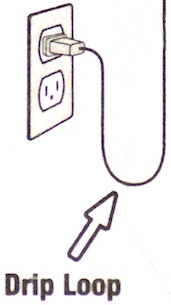
Step 3: Add Fake Plant Decorations
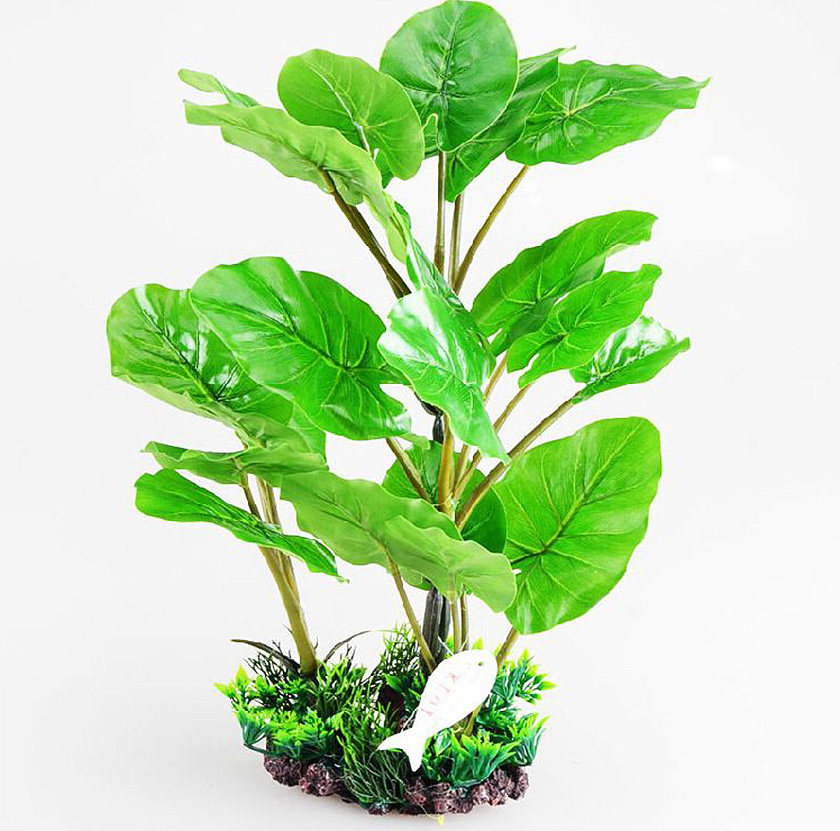
The next step on our tank set-up is to place the artificial plants in place. This really comes down to personal preference but my only suggestion is to try and hide the water heater with one or more of the plants.
If you’re wondering why we add these before the gravel, its because most fake plants are designed to sit beneath the substrate. If your fake plants are designed for that, you should go to step #4 before adding your plants.
Using real plants is a great option too. Because I’m not qualified to teach you how to keep real plants alive in an aquarium, I’m not suggesting it here. However, if this something you’re interested in, I encourage you to use live plants but find someone who knows more about this subject than me.
Step 4: Add the Substrate
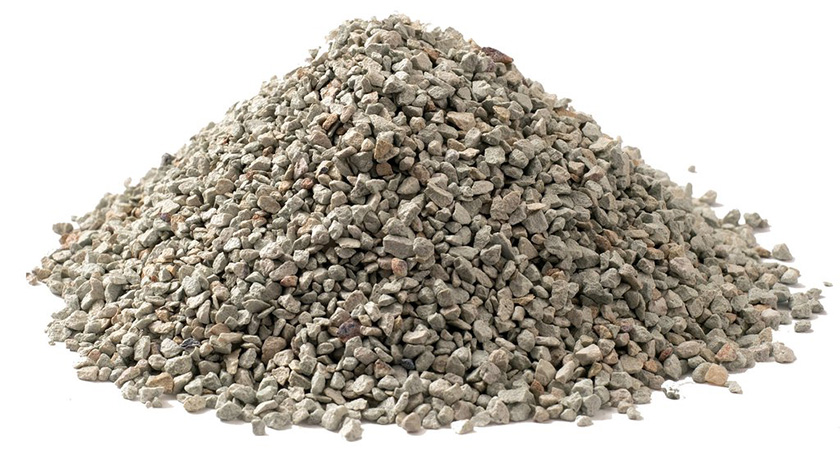
Aquatic frogs have been known to accidentally eat small gravel substrates, which can lead to impaction. Not only that, juvenile aquatic frogs can easily get trapped between the large gravel. So as you can imagine, you’ll need to be a little picky and find a nice medium-sized gravel. Or simply avoid rocks all-together and use a different substrate. Listed below are some substrate options with low impaction risk.
- Pieces of slate
- River rocks (not too large)
- Marine sand
- Bathroom Tile
If you happen to choose sand, go with a marine-grade sand to be safe. Many of them have high levels of calcium carbonate, which will affect the pH level of the water. Also, allow the water to settle overnight if possible.
Step 5: Finish Setting up the Decorations
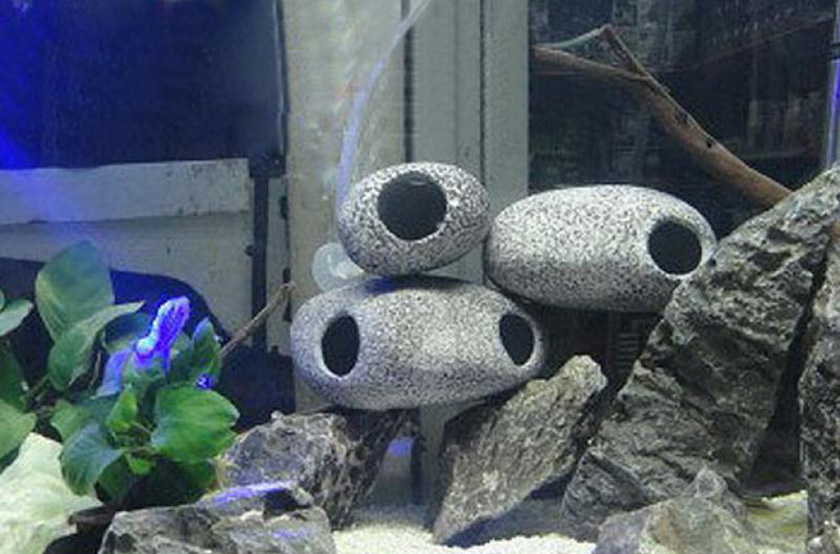
One of the most important features of an aquatic frog setup is the ‘hides’. Hides include logs, plants, rocks, decorations, and other items suitable for giving your pets a hiding place. Provide at least 2 different hiding places. If possible, provide 3 or 4; some small and some large.
I’ve seen people using clay garden pots to create hiding places, and they worked great. You can spend as much or as little as you want, it’s entirely up to you.
Step 6: Fill the Tank with Water
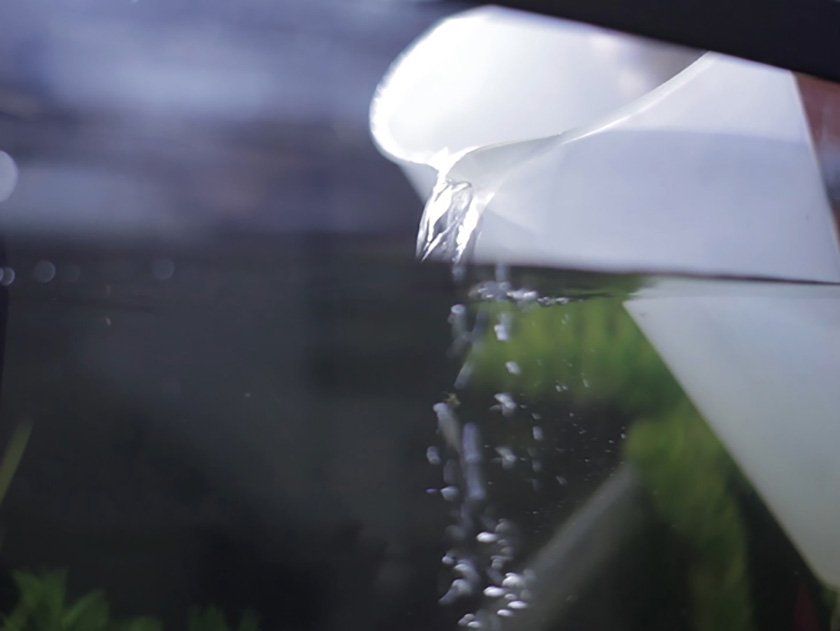
The final step is to fill the tank with clean, dechlorinated water. Amphibians need toxin free water to remain happy and healthy. If you’re not familiar with this, please read this safe water guide for amphibians. I recommend using a water conditioning agent with tap-water. It’s just the fastest, easiest way to fill an aquarium and ensure the water is suitable. My favorite is ReptiSafe but there are several other options available online and in pet stores.
One of the best methods for filling a tank with water and not messing up the plants, decorations, and the substrate is to place a dinner plate on top of the substrate; gently pour the water on top of the plate until there is 4 – 5 inches of water in the tank. At that point, it’s safe to remove the plate and fill the rest of the tank with water. Be mindful of your decorations so you won’t have to come back and adjust them later.
Introducing Your Frog to the Aquarium
Once finished, I suggest letting your aquarium sit overnight. This allows everything to settle down in the water and allows it to become room temperature. Before placing your frogs into their new home, turn on the water heater long enough for the water to reach the desired temperature. For African Dwarf Frogs the sweet-spot is right around 78 degrees Fahrenheit. As for African Clawed Frogs, they prefer the water temperature around 72 degrees.
Get a sandwich bag or a plastic container and fill it with the water your frog is currently in. If you’ve just purchased the aquatic frog(s), they’re likely already in a plastic bag. If not, get the frog into the bag and gently place the bag inside the new aquarium. Let them adjust to the temperature of the water in the new aquarium. Once they’ve had time to acclimate, you can release them into their new home.
One last thing, don’t forget to place a screen cover on the top of the aquarium. Even though these frogs are in the water, they can still jump out. I hope this guide was helpful to you! If so, please consider sharing it with your friends and family on social media.

30 Comments
Hi! My son has been researching ADFs for a while and is ready to get his tank and frogs! I read your article; it was very informative, thank you! What type of filter do you recommend and will he need an air pump for the tetras that he plans to keep with his frogs?
He’s getting a 20 gallon long tank. Thank you for your help!
I believe tetra do need an air pump but I’m not entirely sure about that. I will warn you that the tetras might become a meal for the ADFs! They’re known to eat small fish (anything small than they are). External filters are decent but I don’t have a certain brand I’d recommend over another!
I was gifted an ADF about a month ago and he’s been “singing” for the last several weeks; from looking into this, he’s apparently “mature” and well, I felt bad for him since he was the only ADF in a tank with two Black Skirt Mollies. I have successfully acquired a companion for ADF #1 and for the past three days, the newbie won’t come out of hiding… is this normal?
You should probably just leave the frog be, they may take a while to get used to being with others, make sure there isn’t too big a size difference between your frogs! 😀
8-9 years I got an ADF in a very small enclosure with nothing but water some pebbles and a small castle thing for fish tanks, the place we got him said that all we needed to do was feed it and it would be good. Recently I’ve started to feel like his current habitat is completely unsuitable for him so I’ve been looking into getting him a larger tank. Because he hasn’t had any issues in his current enclosure for 8ish years I’m scared that moving to a larger tank would overwhelm him. Im not the best with frogs since I was quite young when I got him so I don’t know what is and isn’t good. I just want to know if moving him to a larger tank will be ok.
Hey, Chloe! That’s a good question and I understand your concern. Moving him into a larger tank is fine! My only suggestion is to keep the water level approximately the same as it is now. For example, if he’s in a 10 gallon tank now and the height of the tank is around 10″ and you move him into a 40 gallon breeder (just an example), then make sure the water level is around 10″ – 12″ inches in height in the new tank. This is a good rule for ADF’s and ACF’s in general. Around 12″ in water is good for them. Be sure to provide a few hiding areas in the new tank!
Good evening John! I have some questions on ADF’s, since I kept ADF’s in the past, but the first two I bought died a week after I introduced them to my 5-gallon tank. So, I have some questions?
Would it be safer to only have one dwarf frog in my tank instead of two, to avoid risks of disease?
Some people say I need to cycle the tank before releasing the frog in, but I don’t know how to properly cycle an ADF tank. Would you be able to explain me?
How do I detect and/or fix the pH and ammonia issues in the frog tank?
Kindest regards!
Hey there! I’ll help the best I can. Cycling the water would be nice but ensuring the water is dechlorinated and kept at the recommended temperature is key. Frequent “partial water changes” is necessary to adjust the pH level in the water. This is one of the most popular methods of maintaining suitable water. You can buy those water test strips for fish tanks to monitor the acidity in the water btw!
Cycling an aquarium is a topic with lots of details. It’s something worth reading a detailed article about (which I recommend). In short, it’s a process that occurs within a water filter (in part) where beneficial bacteria converts ammonia to nitrites, then to nitrates, and then the nitrates are removed. It takes time for the beneficial bacterias to establish. If this is your ultimate goal, I recommend studying he topic in detail. I apologize for not being more helpful, but this subject is worth understanding completely and it’s not something I could explain well enough in a comment! Perhaps I can create a guide on the topic one day! I hope this helped!
I have a ADF and I have treated him for disease and fungus problems .He still doesnt shed his skin correctly and has this fuzzy stuff coming up from his back.He doent look anything like the other healthy ADF and I have run out of solutions.I test water for p.h.and ammonia every day .Also any suggestion on an easier way to prevent partial daily water changes and keeping the tank looking clean?
Are you currently using a water filter?
I have an ADF that lost her buddy, a female betta. I considered another betta but decided to get a 10 gal tank and add 2 adfs. When I add fish to my aquariums I isolate them for 2 weeks or so and do a round of parasite treatment, fungus treatment and antibiotics. Would this be advisable for ADFs?
Yes, that’s a good idea for the ADF as well. One more tip is this; make sure the new ADF is close to the same size as your other one! Sometimes large clawed frogs will attack, hurt, or kill smaller frogs.
Hi, I am so glad to have found your website! We currently have one ADF in a 5 1/2 gallon tank with 3 guppies. We’ve been considering getting a 10 gallon tank, moving our cute frog in there, and getting another ADF. Is there anything we need to consider when getting another one? I’m also trying to figure out the best location for a new tank. I have a spot by a window, its not in direct sunlight, but still by window?
Hey, Erica! So sorry for the late reply. Upgrading the size of the enclosure is definitely a good idea. I would even recommend 15 gallons if possible. So here is my advice. Should you get a new ADF, make sure its close to the same size of your first ADF before putting them together. Having an adult ADF with a juvenile ADF can cause problems. Sometimes the bigger one will pick on the smaller one. As for the window, you have to be very mindful of the fluctuating temperature associated with placing a tank near a window. Its good that its not in direct sunlight but how much will the temperature increase during the day? Another thing to consider is cold weather and how windows can be drafty – letting in cooler air.
40g tank African clawed frog how many to a tank ?
You can safely fit four in there. Make sure they’re the same size/age when you put them in the same enclosure. Mixing an adult ACF with a juvenile can cause problems (the small one might become food for the large one).
Are the acf irritated by the vibration from a filter?
This is one of those “heated” topics in the world of aquatic frogs. Some say they are while others say they aren’t. A quiet filter is certainly recommended!
Would u recommend a sponge filter? For clawed frogs
A sponge filter should work fine. Do your best to minimize the noise and keep the intake from hurting the inhabitants! The filter shouldn’t replace partial water changes. It’s just meant to help keep the water clean in between.
I wonder the same thing all the time! My filter is loud and I have got 3 different ones looking for a quiet one but they all seem loud to me. I can’t help but think it must be irritating to them. I even turn it off and in during the day to give them a break from it but I don’t k is if that does more harm or not and they should just get used to the filter being in all day? I feel bad for the little guys. I have 2 AFD’s, a beta, and a few guppies in a 10 gallon tank. I also got a small one with a larger one. I wish I would’ve read this first. I just thought it would be easier to tell them apart so I made sure they were both eating. Is this awful?
Is distilled water O.K. for African Dwarf Frogs? We usually use spring water.
I would stick with spring water, especially for African Dwarf Frogs 🙂
Thank you so much, my so hatched these frogs in school and has watched them evolve to frogs so I wanted to take great care of them. My question is do the tank need a lid or can I just out netting on top. Also since we have three frogs Injust got a regular tank, is that ok?
No problem, Haiey! I’m glad you found this helpful. So, for the lid, you just need some type of screen covering to keep the frogs from jumping out of the tank. A regular tank/aquarium is fine! Try to keep the water level around 10 – 12 inches deep!
We have two ADF in our fish tank that we have from a friend. And today we found one of our ADF trying to eat the EEL that was in our tank. We are feeding them with the rest of the fish tank just like our fiend told us to do. But is our frogs missing some kind of food and do they tend to eat the fish in the tank with them?
I have an ADF that I originally purchased for my daughter. As it normally goes, I am parent to the frog also. We realized he’s been part of our family for 7 years now. What is their avg life expectancy?
Hey Nicole! It’s hard to say exactly how long your ADF will live. Many keepers claim 5 years is the average but that’s a misleading answer. A better estimate is around 10 years in captivity but their lifespan is subject to how well you take care of them. The frog’s genetics play a role in this, too.
I did some research on this topics and discovered the lifespan of an ADF varies greatly. Many keepers report 5 years is average while others report 12 years. Having said that, there are claims of African Dwarf Frogs living 20 + years. I hope this helps to answer your question 🙂
I have 2 frogs that was pasted down to me do this helped alot thanks
Hey no problem! I’m glad it helped